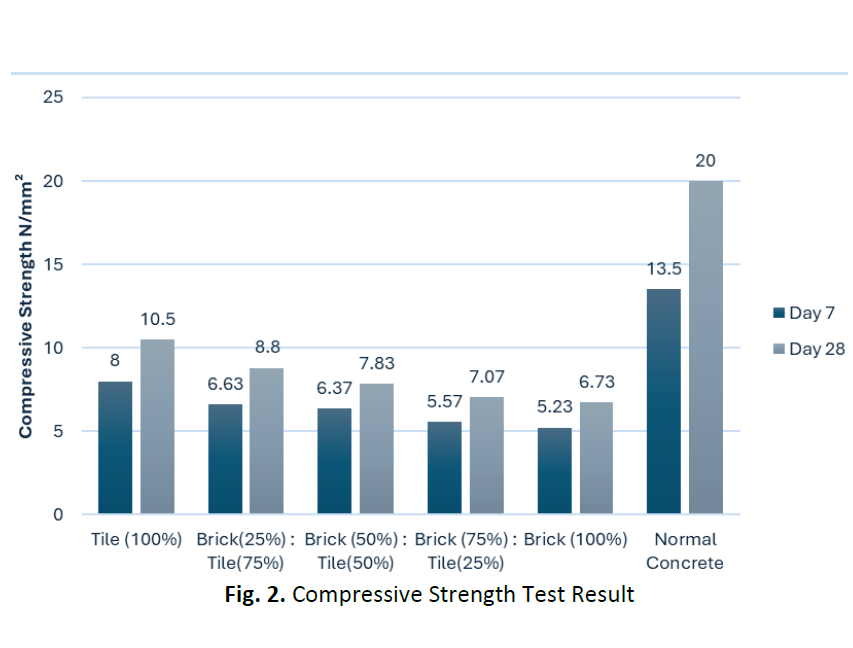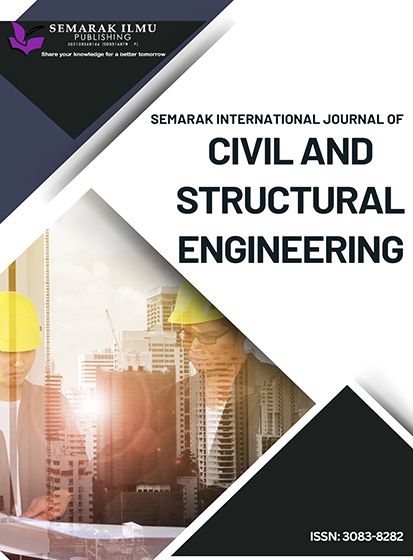Study on Concrete Production using Waste Brick and Tiles as a Replacement for Coarse Aggregates
DOI:
https://doi.org/10.37934/sijcse.5.1.1123Keywords:
Concrete, agregate, tile waste, brick waste, concrete strength, density, water absorptionAbstract
This study focuses on producing concrete by using brick and tile waste as a replacement for coarse aggregates. The main goal of this research is to help reduce the growing problem of construction waste and promote sustainability in the construction industry. The study analyses the physical and mechanical properties of the produced concrete, including water absorption, density, compressive strength, and slump tests. The research uses a 1:2:4 mix ratio, with concrete samples tested after curing periods of 7, 14, and 28 days. The results show that using brick and tile waste as a substitute for coarse aggregates can produce concrete with strength and durability properties comparable to conventional concrete. This study also proves that using construction waste as an innovative material reduces reliance on natural aggregate resources, supporting the "3R" initiatives (Reduce, Reuse, Recycle) in waste management. In terms of application, this study has significant potential for use in TVET institutions, especially for students' technical training. It can help lower the cost of purchasing construction materials, address the issue of waste accumulation in workshops, and give students the opportunity to understand the importance of innovation and sustainability in construction. This study not only contributes to reducing environmental pollution but also offers a more effective alternative for the construction sector, aligning with the needs of sustainable development.









